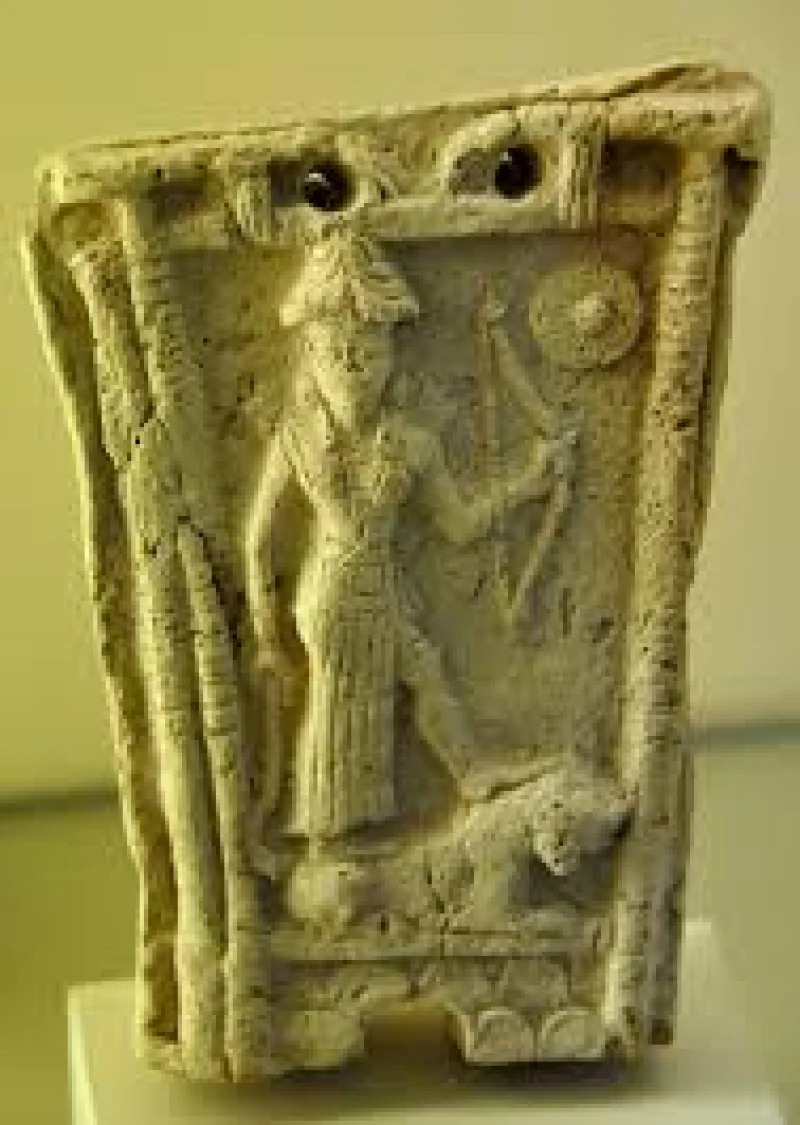Short Summary
Ishtar, a prominent deity in ancient Mesopotamian mythology, is known for her complex and multifaceted character. She was the goddess of love, beauty, war, and political power, and her influence spanned various aspects of life and society. Ishtar’s narratives are central to many myths, including the Epic of Gilgamesh, where she plays a significant role. Her worship extended across Mesopotamia, reflecting her importance in religious and cultural traditions of the time.
Early Life & Education
As a deity, Ishtar did not have a childhood in the human sense. However, she was a significant figure in the pantheon of the Sumerians, Akkadians, Assyrians, and Babylonians. She was associated with the planet Venus and was considered the daughter of the moon god Sin and the sister of the sun god Shamash. The myths surrounding Ishtar, such as her descent into the underworld, were likely influenced by earlier Sumerian traditions and reflect the syncretic nature of Mesopotamian religion.
Career Highlights
Ishtar's role in mythology was varied and influential. She was a central character in several myths, including the "Epic of Gilgamesh," where she proposes marriage to Gilgamesh and, upon being rejected, unleashes the Bull of Heaven. Her most famous narrative is perhaps the "Descent of Inanna," a story of her journey to and return from the underworld, which illustrates themes of death and rebirth. Ishtar's worship involved elaborate rituals and was integral to the political and religious landscape of Mesopotamia.
Major Achievements
- Central character in the "Epic of Gilgamesh," showcasing her power and influence.
- Subject of the myth "Descent of Inanna," highlighting her role in life and death cycles.
- Worship spread across Mesopotamia, connecting different cultures and societies.
- Influenced future mythologies, contributing to the archetype of the goddess of love and war.
Famous Quotes
- Direct quotes from Ishtar are not available, but myths depict her as assertive and commanding.
Interesting Facts
- Ishtar was associated with the planet Venus, representing both morning and evening stars.
- Her symbols included the lion, representing her fierce nature, and the eight-pointed star.
- Ishtar had both a nurturing aspect as a goddess of love and a destructive side as a goddess of war.
- She was known as Inanna in Sumerian mythology, highlighting her enduring legacy across cultures.
Legacy / Influence
Ishtar's legacy is profound, influencing not only the religious practices of ancient Mesopotamia but also the broader cultural and mythological landscape. Her complex character as a goddess of love, war, and political power has persisted through time, impacting later mythologies and religious traditions. Ishtar's archetype can be seen in various cultures, demonstrating her lasting impact on the representation of female divinity.
FAQ
Q: Why is Ishtar famous?
A: Ishtar is famous as a major deity in Mesopotamian mythology, known for her roles in love, war, and political power.
Q: What myths is Ishtar involved in?
A: She is involved in the "Epic of Gilgamesh" and the "Descent of Inanna," among others.
Q: How did Ishtar influence later cultures?
A: Her archetype influenced later depictions of goddesses in various mythologies, particularly in roles involving love and war.










